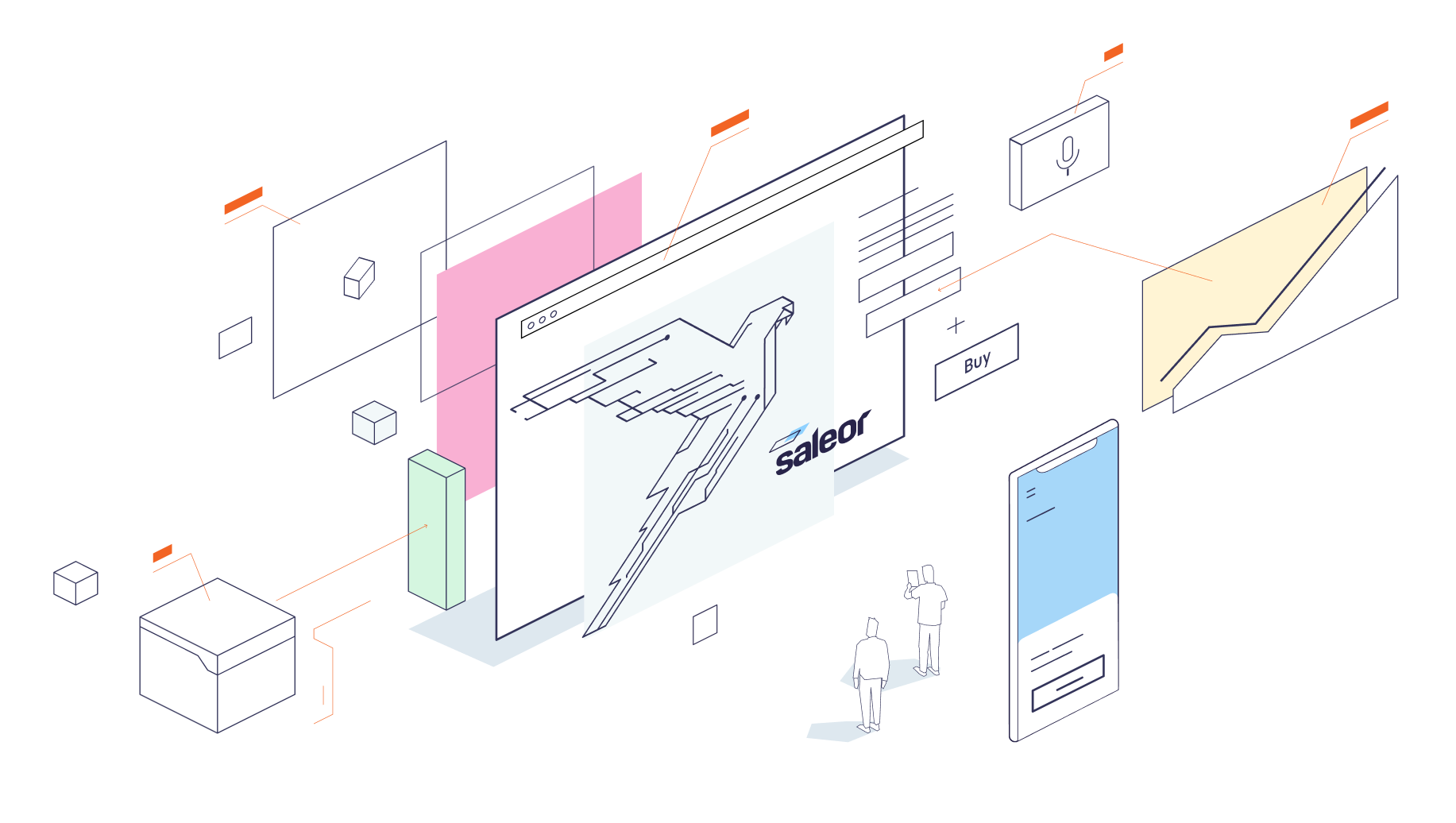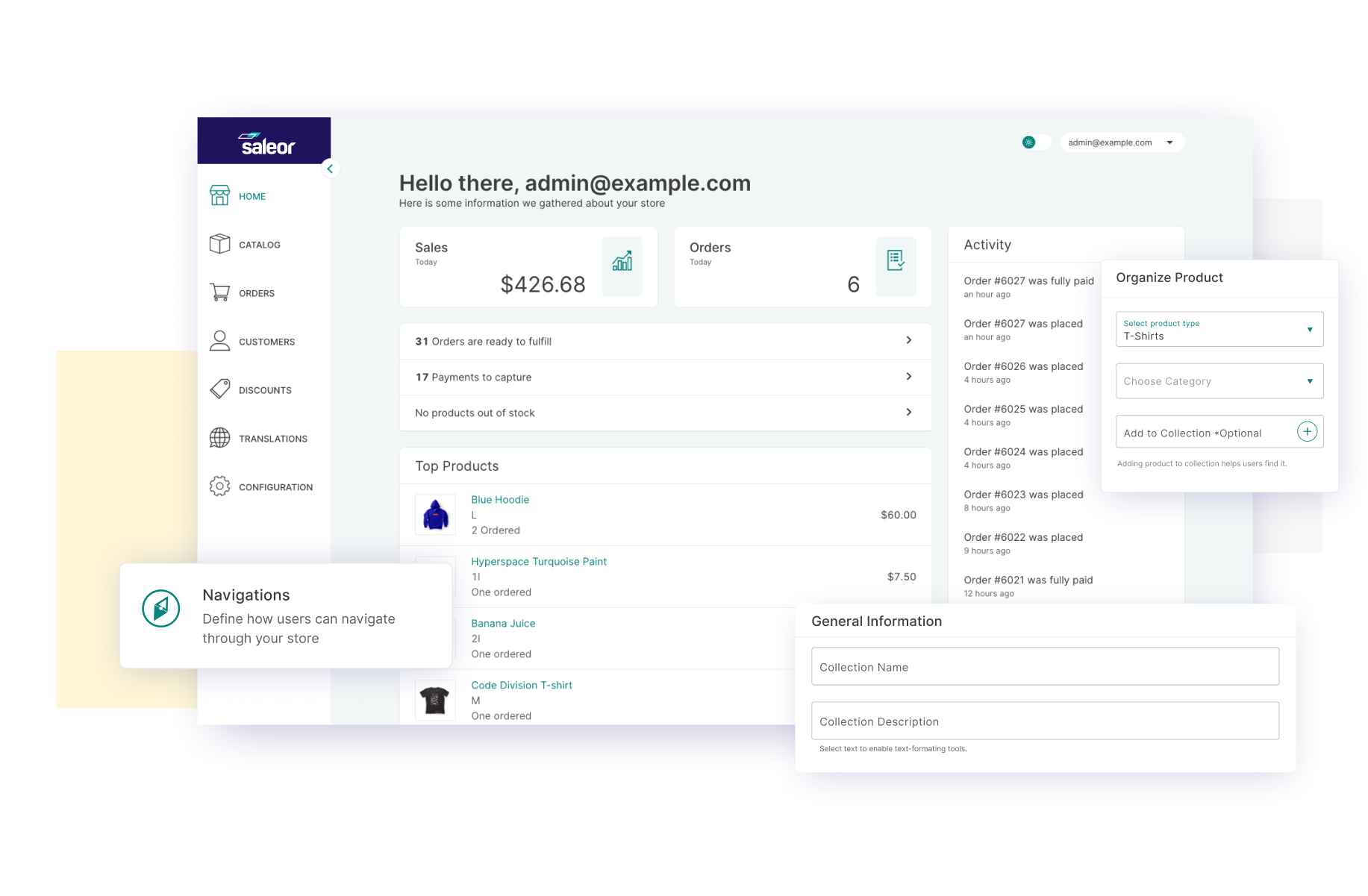- What makes Saleor special?
- Features
- Installation
- Documentation
- Demo
- Contributing
- Translations
- Your feedback
- License
Saleor is a rapidly-growing open source e-commerce platform that has served high-volume companies from branches like publishing and apparel since 2012. Based on Python and Django, the latest major update introduces a modular front end powered by a GraphQL API and written with React and TypeScript.
- PWA: End users can shop offline for better sales and shopping experiences
- GraphQL API: Access all data from any web or mobile client using the latest technology
- Headless commerce: Build mobile apps, customize storefronts and externalize processes
- UX and UI: Designed for a user experience that rivals even the top commercial platforms
- Dashboard: Administrators have total control of users, processes, and products
- Orders: A comprehensive system for orders, dispatch, and refunds
- Cart: Advanced payment and tax options, with full control over discounts and promotions
- Payments: Flexible API architecture allows integration of any payment method. It comes with Braintree support out of the box.
- Geo-adaptive: Automatic localized pricing. Over 20 local languages. Localized checkout experience by country.
- SEO: Packed with features that get stores to a wider audience
- Cloud: Optimized for deployments using Docker
- Analytics: Server-side Google Analytics to report e-commerce metrics without affecting privacy
Saleor is free and always will be. Help us out… If you love free stuff and great software, give us a star! 🌟
Saleor requires Python 3.8, Node.js 10.0+, PostgreSQL and OS-specific dependency tools.
See the Saleor docs for step-by-step installation and deployment instructions.
Note:
The master branch is the development version of Saleor and it may be unstable. To use the latest stable version, download it from the Releases page or switch to a release tag.
The current stable version is 2.11 and you should use this version for all three components:
- Saleor: https://github.com/saleor/saleor/releases/tag/2.11.1
- Dashboard: https://github.com/saleor/saleor-dashboard/releases/tag/2.11.1
- Storefront: https://github.com/saleor/saleor-storefront/releases/tag/2.11.0
Saleor documentation is available here: docs.saleor.io
To contribute, please see the saleor/saleor-docs repository.
The easiest way to run all components of Saleor (API, storefront and dashboard) together on your local machine is to use the saleor-platform project. Go to that repository for instructions on how to use it.
For PWA, single-page storefront go to the saleor-storefront repository.
For dashboard go to the saleor-dashboard repository.
Want to see Saleor in action?
View Storefront | View Dashboard (admin area)
Or launch the demo on a free Heroku instance.
Login credentials: admin@example.com/admin
We love your contributions and do our best to provide you with mentorship and support. If you are looking for an issue to tackle, take a look at issues labeled Help Wanted.
If nothing grabs your attention, check our roadmap or come up with your feature. Just drop us a line or open an issue and we’ll work out how to handle it.
Get more details in our Contributing Guide.
Do you use Saleor as an e-commerce platform? Fill out this short survey and help us grow. It will take just a minute, but mean a lot!
Disclaimer: Everything you see here is open and free to use as long as you comply with the license. There are no hidden charges. We promise to do our best to fix bugs and improve the code.
Some situations do call for extra code; we can cover exotic use cases or build you a custom e-commerce appliance.




